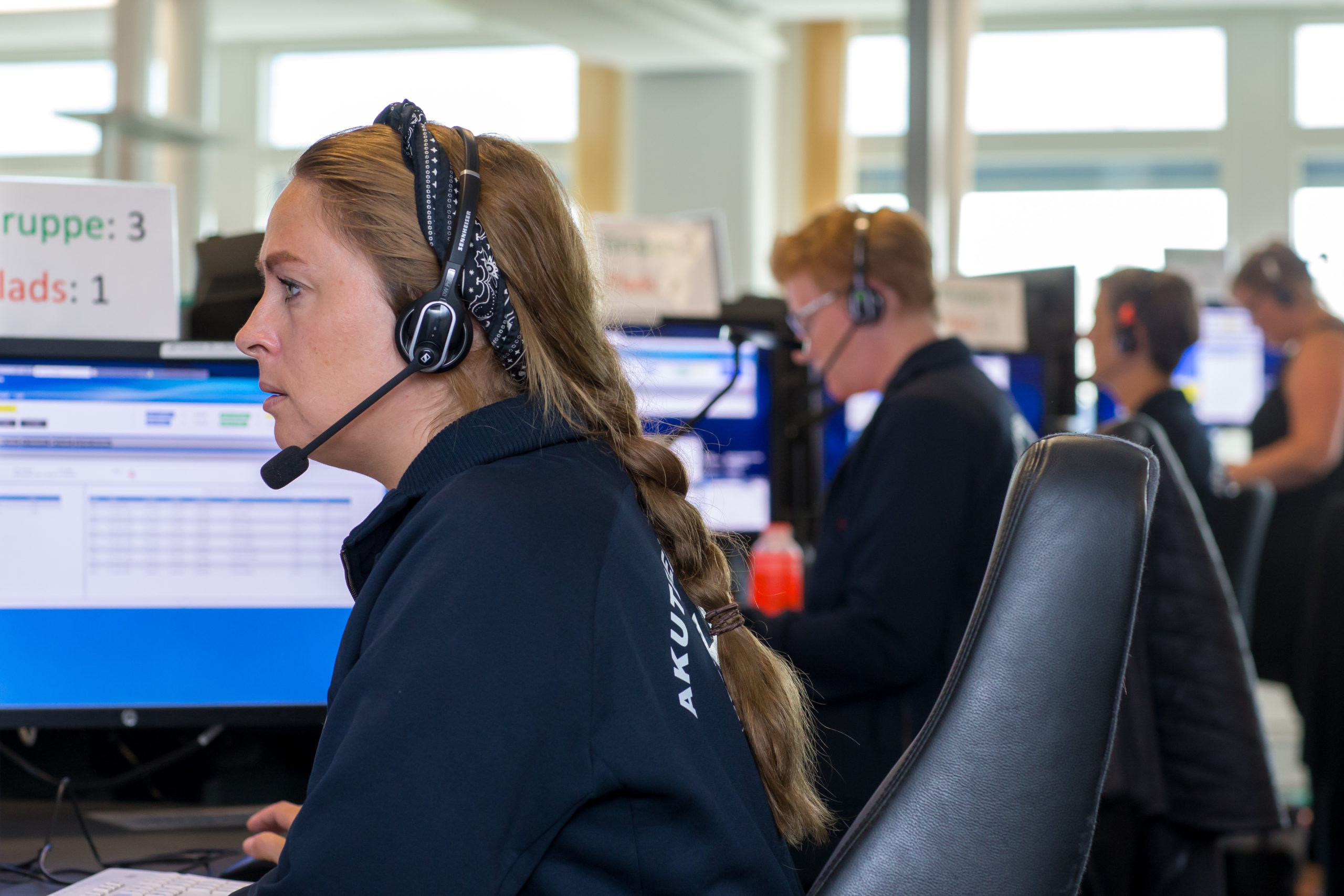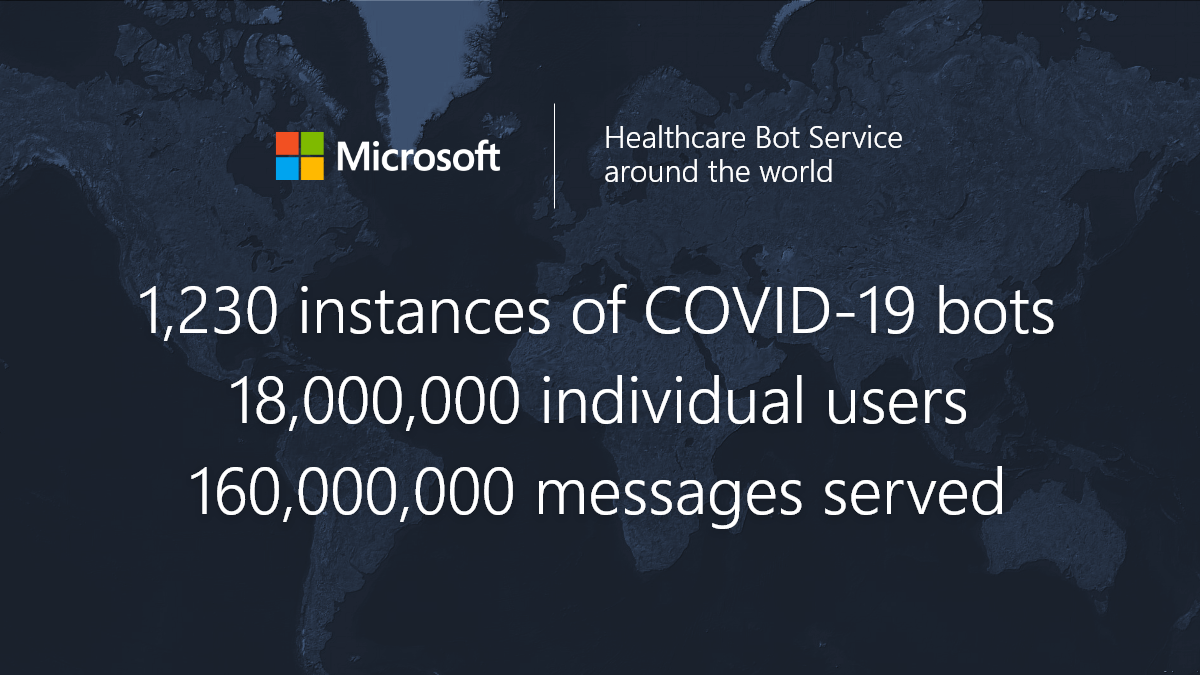
How international health care organizations are using bots to help fight COVID-19
As the coronavirus pandemic began spreading across Europe earlier this year, the number of calls to Emergency Medical Services Copenhagen quickly ramped up.
The organization, which provides emergency care for about one-third of Denmark’s population, saw calls to its emergency lines almost double after the outbreak began, with around 2,000 calls coming in daily by early March from worried people who were showing symptoms of COVID-19 or had questions about the disease.
The organization opened a second call center to handle the inquiries, but that wasn’t enough.
“We realized that many people had the same general questions,” says CEO and medical doctor Freddy Lippert. “A virtual assistant seemed like a great option to decrease the load on the workforce. Not only can it handle much more volume than the call center, it can run a symptom checker and identify high-risk patients according to medical protocols in the same way medical staff would, directing those in need to a ‘warm handover’ with a human.”

Freddy Lippert, CEO of Emergency Medical Services Copenhagen.
Emergency Medical Services Copenhagen is now among health care organizations in Europe and beyond using Microsoft’s Healthcare Bot service to help screen people for potential coronavirus infection and treatment. Powered by Microsoft Azure, the service uses artificial intelligence (AI) and natural language processing technology to help organizations create their own bots — in which the data is owned and solely accessible by the organization — to respond to inquiries and free up doctors, nurses and other health care professionals so they can provide critical care to patients who need it.
Microsoft’s Healthcare Bot service has been used by health care organizations for more than a year and was originally designed to support common virtual health assistant scenarios. But as the coronavirus pandemic took hold, threatening to overwhelm health care systems worldwide, organizations in the U.S., Europe and the Middle East have been using the tool to help screen patients for potential COVID-19 infection.
Since March, health organizations have created 1,230 COVID-19 self-assessment bots based on the Microsoft Healthcare bot service, reaching 18 million individuals and serving more than 160 million messages.
“The coronavirus pandemic is putting unprecedented demands on health care systems and workers globally,” says Hadas Bitran, group manager of Microsoft Healthcare and head of the Healthcare Bot team.
“Bots can help alleviate some of that pressure by addressing queries from patients and helping them with information about possible next steps if they have symptoms of COVID-19.”

Using the Microsoft Healthcare Bot service, Emergency Medical Service Copenhagen created and launched its COVID-19 bot in mid-March in less than two days. The bot answered 30,000 calls the first day, Lippert says, lowering the number of inquiries to Denmark’s emergency number and reducing demand on healthcare workers.
“It was a great service for those who used the bot and it allows us to focus on patients that really need help,” Lippert says. “We saw the immediate effect.”
The bot was considered so successful that it was quickly rolled out nationwide. Stephanie Lose, president of the Danish Regions, says the tool will help relieve the burden on emergency lines throughout the country and ensure callers in most need of help can be assisted sooner.
“I am proud that, at a critical time during the COVID-19 epidemic, we have succeeded in scaling a solution from one region to the whole country,” she says.

Spallanzani Hospital in Rome, which treated Europe’s first two confirmed coronavirus cases, used Microsoft’s solution to develop its own bot.
Italy, which was among the countries hit earliest and hardest by the pandemic, has also set up its own COVID-19 bot. Rome’s Spallanzani Hospital, which treated Europe’s first two confirmed coronavirus cases in late January, used Microsoft’s solution to develop a bot in a few hours, with the goal of helping meet requests for information that quickly swelled as the number of cases grew.
Gabriele Rinonapoli, the hospital’s IT manager, says while the country remains focused on dealing with an “extreme health crisis,” the bot will likely be used more in future months to help manage treatment for patients with chronic conditions.
“The bot can make it easier for citizens to access information,” he says. “The standardization of information is critical for emergency management, to limit unnecessary access to health care facilities and reduce the workload of public relations offices. Moreover, the analysis of questionnaire replies could create an interesting database to develop new studies.”
Rinonapoli sees potential for bots to be used broadly by health care organizations to collect data that can help to better understand diseases and develop proactive health measures.
“If all health care organizations were provided with these tools, it would be easier to gather real-time, real-world data,” he says.

Visa Honkanen, director of development at Helsinki University Hospital.
Helsinki University Hospital in Finland used the Healthcare Bot to create its Coronabot, which asks users questions about symptoms, potential exposure and interactions with people who have the coronavirus and provides information on seeking treatment. Additionally, it offers information on managing anxiety as well as exercises and content created by mental health professionals at the hospital.
In a country of about 5.5 million people, the Coronabot, launched March 16, had logged more than 73,000 visitors and 1.5 million messages by early April, allowing health care workers to focus on sick patients and prepare for a possible uptick in infections if the level of testing increases in Finland.
“In these unprecedented times, it’s so important to provide the right information and to disseminate it openly and publicly,” says Visa Honkanen, director of development at Helsinki University Hospital. “We are lucky that we live in a culture where misinformation has a difficult stand. The bot really played an important role in educating the public.”
The hospital is now exploring additional scenarios in which the bot might be used — for example, to proactively communicate with patients about scheduled treatments or provide information about procedures.
“This is freeing resources for the team to focus on the (coronavirus) crisis,” Honkanen says.
Microsoft’s solution is also being used at Tel Aviv Sourasky Medical Center, Israel’s largest acute care facility, which created its COVID-19 bot — named Corey — in less than a day. The bot received thousands of inquiries on its first day of operation in late March and has so far served more than 30,000 people and handled some 412,000 messages.

Ronni Gamzu, CEO of Tel Aviv Sourasky Medical Center.
“We were able to reduce the load on the health care system and ensure that caregivers have more time to treat patients,” says Ronni Gamzu, the center’s CEO.
“Other organizations should know that it does not take a tech expert to deploy the bot. It is very easy, fast and intuitive.”
Microsoft is working with health care organizations around the globe to deploy their own versions of the Healthcare Bot and is committed to helping health systems respond to the pandemic.
“We’re grateful to be able to help health care organizations quickly offer their communities and patients a COVID-19 self-assessment bot based on the Microsoft Healthcare Bot service,” Bitran says. “As a technology company, it’s critical for us to provide solutions that can help patients and clinical teams in the fight against this global health crisis.”
Top photo: Workers at Emergency Medical Services Copenhagen. Photo by Akutberedskabet. Photo of Freddy Lippert by Rune Evensen. Photos of Visa Honkanen and Helsinki University Hospital courtesy of HUS. Photo of Spallanzani Hospital courtesy of the hospital.
